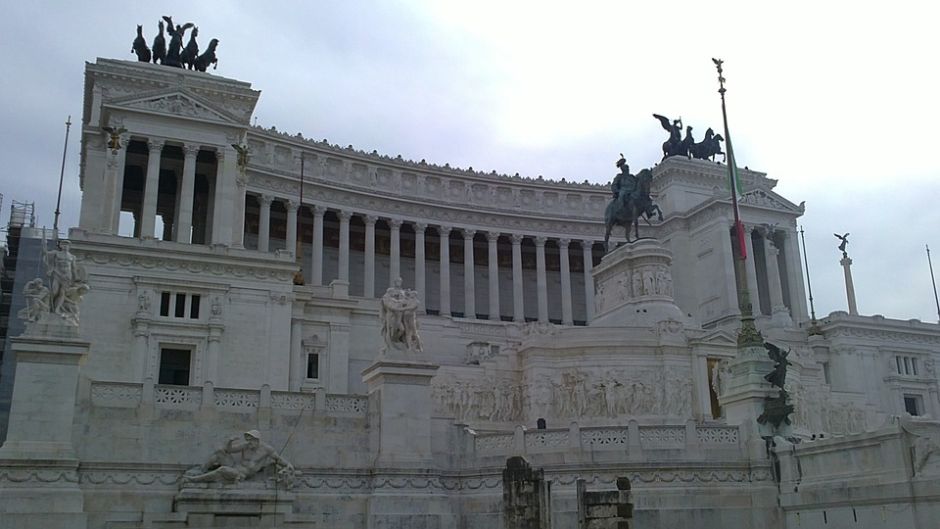
UBS: Agreement on electoral system could lead to early vote
The four largest political parties in Italy seem to have come to an agreement on a proportional electoral law. The new system would favor broad coalitions and reduce the chances of an anti-establishment victory. Along with the outcome of the next local elections, it could lead to earlier elections in the fall.
01.06.2017 | 11:04 Uhr
The latest news suggests a new electoral law could be formulated and passed faster than previously expected. The four major parties appear to broadly agree on electoral and parliamentary rules based on the so-called "German system."
This system entails a proportional structure that requires a party to receive 5% of the popular vote to gain seats in parliament. It would allow the systems deployed in both Houses to converge as required by the president and would likely necessitate that coalitions be formed to govern the country. No political party today polls the kind of numbers that would suggest it would achieve an outright electoral victory. The 5% threshold would reduce the political fragmentation that followed last year's constitutional referendum. With it in place, only four parties would be certain of being represented in parliament. So it would pressure the smaller parties to fold into the larger ones or merge, leading to more political concentration, a positive development in our view. The new system would also allow similar representation of parties in both parliamentary chambers.
A 5% threshold would in effect increase the number of seats controlled by the major parties and reduce those allotted to the small ones. If the threshold were lowered, the system of course would become a purely proportional one. The threshold in itself, however, does not prevent the possibility of a hung parliament. Based on current polls and using the 5% threshold, the combined parliamentary vote totals of the Democratic Party (PD) and Forza Italia (FI) would in principle near the 50% needed for them to form a governing coalition. But a center-left or a center-right coalition would fall short of that level. A scenario where the 5SM (or any other party) wins an outright majority would be extremely unlikely.
The end of the Second Republic (which never worked too well)
Up to the 1990s the Italian political system was based on a propor- tional electoral law and government coalitions. Subsequently, the country moved to a majority electoral system, the so-called Second Republic. It was designed to increase political accountability and speed up economic growth.
In fact, one could argue that the move weakened the ability of governments to enact reforms. Trade unions and professional and industrial associations have mobilized to avoid changes, as evidenced by the increase in unit labor costs and the slowly moving judiciary system. A new electoral law could reorganize the political scene and shift voter preferences in a relatively short time. Experience shows that voters react to changes in voting rules.
As noted above, a scenario in which the 5SM (or any other party) wins an outright majority would be extremely unlikely with this system. While a theoretical alliance with the Northern League would bring it close to a majority, 5SM, along with the Northern League, has explicitly ruled one out, so we consider it unlikely. The failure of all the parties to piece together a majority coalition would require yet again a technocratic government, perhaps just a continuation of the current one.
This system would likely prevent some parties, including the populist Fratelli d'Italia, which is against the euro, the MDP party created by members of the PD who left it a few months ago, and Alleanza Popolare (AP), which currently supports the government, from entering parliament.
The AP leader, Foreign Minister Angelino Alfano, has threatened to withdraw his support for the government on that basis, which could lead to early elections. Matteo Renzi is also reported to favor early elections to avoid taking responsibility for a tough 2018 budget law before heading to a new vote.
Greater likelihood of early elections given 2018 budget law
If one assumes quick passage of the electoral law reform, autumn elections, on paper, are feasible. The timing, in our view, will also depend on the outcome of the local elections scheduled for 11 June (second round on 25 June where needed).The local elections will involve over 1,000 towns and 9 million voters, a relatively small share of the country. Nonetheless, we think that, given the volatility of the political surveys, these local elections will provide an inter- esting snapshot of the Italian political scene. Pending a clearer view on the electoral law reform we see equal chances of the vote occurring in the fall or early next year (which was previously our base case). Early elections might create some near-term volatility while removing some advantages for anti- establishment parties – particularly in light of what could be a tough 2018 budget law that might erode the popularity of the parties preparing it.
In fact, the 2018 budget law (to be filed with the European Commission by 15 October) will require meaningful spending cuts and tax hikes to avoid the value-added tax (VAT) and excise hikes previously agreed with the EC. If the president permits elections to take place in the fall, we think he would do so based on some pre-agreed budget approval with the political parties. If not, failing to quickly form a government would lead to the current aus- terity clauses being applied that would sharply raise the VAT and almost certainly harm the economic recovery.




Diesen Beitrag teilen: